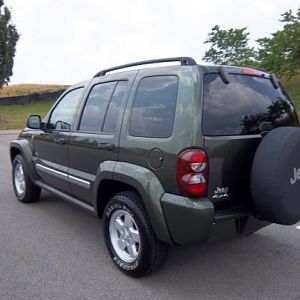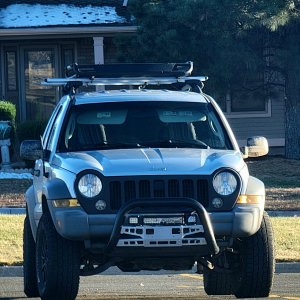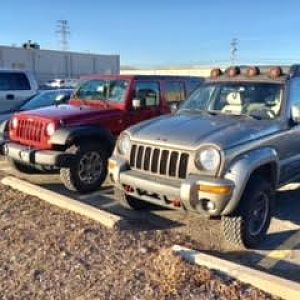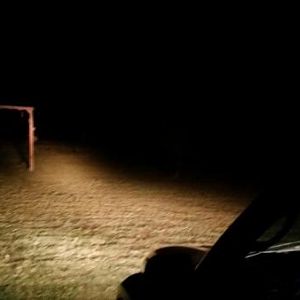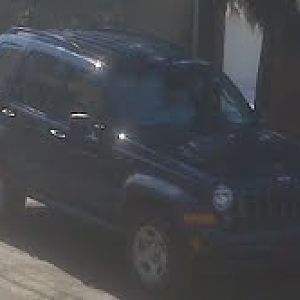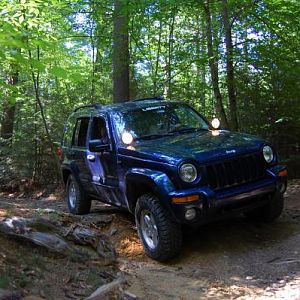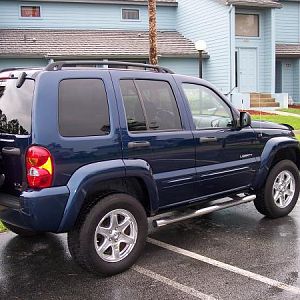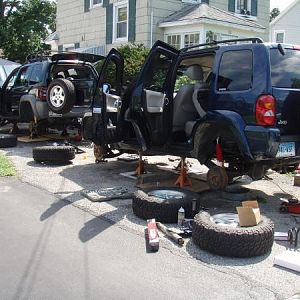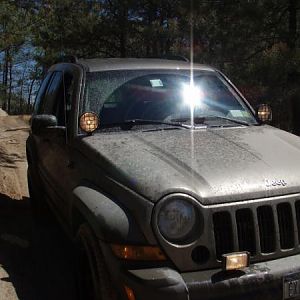This was a interesting article, but one thing comes to mind is it safe to do in a high tip over vehicle like a Jeep?
Tire pressure: When comparing identical cars, tire pressure is another reason why mileage can vary. The evidence is convincing that to a point, higher pressure will improve Fuel Economy and there are other advantages as well. Consider the write-up “Driving Under Pressure” for a succinct reference:
Driving Under Pressure: Proper Tire Pressure Could Save Your Life
(as posted by Sgt. Dave Storton on Officer.com)
How many officers check the tire pressure on their patrol car on a regular basis? We all seem to be great at checking that the lights and siren work, because the time to find out they don't work is not when you get a Code 3 call. Likewise, the time to find out your tire pressure is too low is not when you are in a pursuit and trying to take a corner at high speed.
What is proper pressure?
The proper tire pressure for the Police Crown Victoria is 44 psi. If you look on the sidewall of the tire, you will see that it lists 44 psi max pressure. Regardless of what vehicle you have, use the maximum pressure listed on the sidewall. Higher pressure results in better performance, decreased tire wear, and it lessens your chance of hydroplaning at a given speed. This number on the sidewall lists the maximum amount of pressure you should ever put in the tire under normal driving conditions. Pursuits and Code 3 responses are not normal driving conditions. Many agencies maintain tire pressure at 35 psi since this is what is listed in the owner's manual and on the door placard. The reason the owner's manual lists 35 psi is because we get the same manual as the civilian version of the Crown Victoria. The police version, however, is fully loaded with communications equipment, a cage, and your gear. You are not looking for a soft and cushy ride, you want performance.
Myths about pressure
Let's put to rest some common misconceptions. The tires will not balloon out creating a peak in the center portion of the tread when tire pressure is above 35 psi. There is a steel belt that prevents this from happening. Also, you are not overstressing the tire with higher pressure, and the tire will not be forced off the rim with higher pressure.
The picture above is Bobby Ore of Bobby Ore Motorsports driving a Ford Ranger on two wheels. The tires on the left side have 100 psi in them, and they happen to be tires and rims from a 1999 Crown Victoria! This is a dramatic example of how pressure holds the tire in shape, and how much stress a tire can handle.
Performance
If you were able to watch a tire as it travels across the ground at high speed, you would see that it deflects to one side during cornering. The faster you are going through a corner, the more tire deflection you get. As the tire deflects over onto the sidewall, you get less traction and more of a tendency to understeer or oversteer. This could spell disaster when negotiating a corner at high speed during a pursuit or a Code 3 run. Higher pressure keeps the tire from deflecting onto the sidewall as much, which keeps more of the treaded portion on the road.
A good demonstration for EVOC instructors is to have students drive a high-speed course in a vehicle with 32 to 35 psi. Then have them run the same course with 44 to 50 psi in the tires. The student will experience a marked difference in performance. Having officers experience this difference in vehicle performance is much more effective than just telling them to check their tire pressure.
Hydroplaning
When a tire rolls across a road covered with water, the tire tread channels water away so the rubber remains in contact with the road. The factors that affect hydroplaning are speed, and water depth. Conventional wisdom says that vehicles will hydroplane in as little as 1/16th of an inch of water. Not so coincidentally, legal tread depth is 1/16th of an inch.
Tire manufactures and the Association of Law Enforcement Emergency Response Trainers International (ALERT) have shown that tires have more of a tendency to hydroplane when pressure is low. This happens because the tire footprint (the portion of the tire actually in contact with the road) is larger. For those of you who water ski, think of which is easier to get up on: a fat ski or a skinny ski. More tire surface in contact with the water makes it easier to hydroplane, just as it is easier to water ski on a fat ski. Also, a soft tire can be pushed in more by the pressure of the water on the center portion of the tread. This results in less rubber in contact with the road.
Tire wear
Much better tire wear results from maintaining proper pressure. Tires with lower pressure will wear off the outside of the tread faster from the deflection of the tire during cornering, and the tires will heat up more from increased road friction. This is one of the factors that caused the failure of a certain brand of tires on Ford Explorers some years ago. In 1999 the San Jose Police Department realized a significant cost savings by increasing the pressure in the training fleet to 50 psi. They soon followed up by increasing the pressure in the patrol fleet to 44 psi. For liability reasons, most agencies are reluctant to exceed the maximum pressure listed on the tire for actual patrol vehicles, but they reap the cost saving when going to 50 psi on training vehicles.
Next time you inspect your vehicle, make sure you check your tire pressure since your ability to performance drive is significantly affected by it. You are not driving to the store to get a loaf of bread! You may be called upon to chase a dangerous criminal or respond to assist another officer in trouble. You don't wonder whether or not your gun is loaded before you hit the street; don't wonder whether your tire pressure is correct once the pursuit starts. Check your tires routinely, just as you do with all other critical equipment.
Tire pressure: When comparing identical cars, tire pressure is another reason why mileage can vary. The evidence is convincing that to a point, higher pressure will improve Fuel Economy and there are other advantages as well. Consider the write-up “Driving Under Pressure” for a succinct reference:
Driving Under Pressure: Proper Tire Pressure Could Save Your Life
(as posted by Sgt. Dave Storton on Officer.com)
How many officers check the tire pressure on their patrol car on a regular basis? We all seem to be great at checking that the lights and siren work, because the time to find out they don't work is not when you get a Code 3 call. Likewise, the time to find out your tire pressure is too low is not when you are in a pursuit and trying to take a corner at high speed.
What is proper pressure?
The proper tire pressure for the Police Crown Victoria is 44 psi. If you look on the sidewall of the tire, you will see that it lists 44 psi max pressure. Regardless of what vehicle you have, use the maximum pressure listed on the sidewall. Higher pressure results in better performance, decreased tire wear, and it lessens your chance of hydroplaning at a given speed. This number on the sidewall lists the maximum amount of pressure you should ever put in the tire under normal driving conditions. Pursuits and Code 3 responses are not normal driving conditions. Many agencies maintain tire pressure at 35 psi since this is what is listed in the owner's manual and on the door placard. The reason the owner's manual lists 35 psi is because we get the same manual as the civilian version of the Crown Victoria. The police version, however, is fully loaded with communications equipment, a cage, and your gear. You are not looking for a soft and cushy ride, you want performance.
Myths about pressure
Let's put to rest some common misconceptions. The tires will not balloon out creating a peak in the center portion of the tread when tire pressure is above 35 psi. There is a steel belt that prevents this from happening. Also, you are not overstressing the tire with higher pressure, and the tire will not be forced off the rim with higher pressure.
You must be registered for see images
The picture above is Bobby Ore of Bobby Ore Motorsports driving a Ford Ranger on two wheels. The tires on the left side have 100 psi in them, and they happen to be tires and rims from a 1999 Crown Victoria! This is a dramatic example of how pressure holds the tire in shape, and how much stress a tire can handle.
Performance
If you were able to watch a tire as it travels across the ground at high speed, you would see that it deflects to one side during cornering. The faster you are going through a corner, the more tire deflection you get. As the tire deflects over onto the sidewall, you get less traction and more of a tendency to understeer or oversteer. This could spell disaster when negotiating a corner at high speed during a pursuit or a Code 3 run. Higher pressure keeps the tire from deflecting onto the sidewall as much, which keeps more of the treaded portion on the road.
A good demonstration for EVOC instructors is to have students drive a high-speed course in a vehicle with 32 to 35 psi. Then have them run the same course with 44 to 50 psi in the tires. The student will experience a marked difference in performance. Having officers experience this difference in vehicle performance is much more effective than just telling them to check their tire pressure.
Hydroplaning
When a tire rolls across a road covered with water, the tire tread channels water away so the rubber remains in contact with the road. The factors that affect hydroplaning are speed, and water depth. Conventional wisdom says that vehicles will hydroplane in as little as 1/16th of an inch of water. Not so coincidentally, legal tread depth is 1/16th of an inch.
Tire manufactures and the Association of Law Enforcement Emergency Response Trainers International (ALERT) have shown that tires have more of a tendency to hydroplane when pressure is low. This happens because the tire footprint (the portion of the tire actually in contact with the road) is larger. For those of you who water ski, think of which is easier to get up on: a fat ski or a skinny ski. More tire surface in contact with the water makes it easier to hydroplane, just as it is easier to water ski on a fat ski. Also, a soft tire can be pushed in more by the pressure of the water on the center portion of the tread. This results in less rubber in contact with the road.
Tire wear
Much better tire wear results from maintaining proper pressure. Tires with lower pressure will wear off the outside of the tread faster from the deflection of the tire during cornering, and the tires will heat up more from increased road friction. This is one of the factors that caused the failure of a certain brand of tires on Ford Explorers some years ago. In 1999 the San Jose Police Department realized a significant cost savings by increasing the pressure in the training fleet to 50 psi. They soon followed up by increasing the pressure in the patrol fleet to 44 psi. For liability reasons, most agencies are reluctant to exceed the maximum pressure listed on the tire for actual patrol vehicles, but they reap the cost saving when going to 50 psi on training vehicles.
Next time you inspect your vehicle, make sure you check your tire pressure since your ability to performance drive is significantly affected by it. You are not driving to the store to get a loaf of bread! You may be called upon to chase a dangerous criminal or respond to assist another officer in trouble. You don't wonder whether or not your gun is loaded before you hit the street; don't wonder whether your tire pressure is correct once the pursuit starts. Check your tires routinely, just as you do with all other critical equipment.


